Imamzadeh Ismail: A historic Safavid Era Shrine in Isfahan
Imamzadeh Ismail is a remarkable historical and religious complex located in Isfahan, Iran. This site is believed to be the resting place of Imamzadeh Ismail and prophet Isaiah, one of the prophets of Israelites.
Emamzadeh Esmail holds deep cultural and spiritual significance and dates back to both the Seljuk and Safavid periods, representing a blend of architectural styles from these influential eras. Registered as one of the national monuments of Iran on January 5, 1931, the complex is a testament to the country's rich Islamic heritage.
Originally, the structure was a pre-Islamic building, which was later converted into a mosque following the Rashidun conquest of Persia. During the Seljuk period, it became known as Shayah Mosque, reflecting the architectural and cultural influences of that time.
The Safavid dynasty further enriched the complex by adding a courtyard and constructing the Imamzadeh Ismail building, creating a harmonious blend of sacred spaces.
Today, Imamzadeh Ismail and Shayah Mosque stand as a symbol of the historical evolution of Islamic architecture in Iran, attracting visitors and scholars alike who are interested in exploring the deep layers of history embedded within its walls.
In this blog, we will delve into the rich history of Imamzadeh Ismail and Shayah Mosque, explore its location, and provide you with all the essential information you need before planning your visit to this remarkable monument.
About Imamzadeh Ismail
Imamzadeh Ismail is a revered shrine within the historical funerary complex of Isfahan, Iran,built around the tomb of Ismail, a grandson of Imam Hasan ibn Ali, the third Ahlulbayt Imam.
This shrine is also the tomb of the prophet Isiah, one of the prophets of Israelites. It also contains the grave of Zinat-Nesa Begum, daughter of Shah Ismail III, and several other notable figures.
The construction of the Imamzadeh began during the Safavid era under Shah Abbas I and was completed in the 17th century during the reign of Shah Safi. The structure is notable for its beautifully decorated dome, which is adorned with intricate tile work, and beneath it lies Ismail's grave, a site of deep reverence.
Visitors are greeted by two gilded wooden doors at the entrance, featuring delicate lines of gold on a steel background. Inside, a hallway showcases a series of paintings by the renowned artist Mohammad Saleh Esfahani, adding to the site's artistic and spiritual richness. Imamzadeh Ismail continues to be a place of devotion and architectural admiration.
Imamzadeh Ismail History
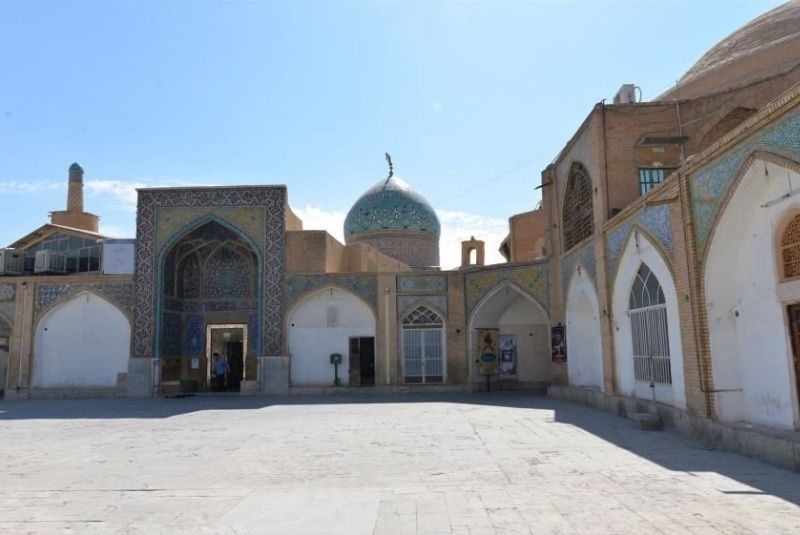
Imamzadeh Ismail and Shayah Mosque, located in Isfahan, Iran, is a significant historical and religious complex dating back to the Seljuk era. Situated in Imam Ali Square on Hatef Street, this site was registered as a national monument of Iran on January 5, 1932.
The complex is not only the burial site of Ismail, a grandson of Imam Hasan ibn Ali, but also houses the tomb of Shaya the Prophet, one of the prophets of the Israelites.
It also contains the grave of Zinat-Nesa Begum, daughter of Shah Ismail III, and several other notable figures, making it a site of both religious and historical importance.
The original structure of the site dates back to pre-Islamic times. During the Rashidun conquest of Persia, it was converted into a mosque and later became known as Shayah Mosque during the Seljuk era. It is recognized as the first mosque in Isfahan, originally named "Jameh Khushinan" and later known as Shayah Mosque.
In the Safavid period, the mosque was expanded with the addition of the Imamzadeh Ismail, built around the tomb of Ismail, a grandson of Imam Hasan ibn Ali.
The dome of the Imamzadeh, adorned with intricate tile work, houses Ismail's grave. The site is further embellished with exquisite calligraphy, including inscriptions by the renowned calligrapher Mohammad Saleh Esfahani.
Who is Imamzadeh Ismail?
Imamzadeh Ismail is a revered figure in Islamic history, recognized as a descendant of Imam Hasan ibn Ali, the second Imam of the Shia community. His lineage, though recorded with slight variations, connects him to prominent figures in early Islamic history. The inscriptions on tiles and woodwork at his shrine list his ancestry as follows:
- Ismail ibn Dibaj ibn Ibrahim Ghamar ibn Hasan al-Mujtaba (an ancestor of the Tabatabaei Sayyids)
- Ismail ibn Hasan ibn Zayd ibn Hasan al-Mujtaba (according to the tilework inscription at the entrance)
- Ismail ibn Zayd ibn Hasan al-Mujtaba (as per the wooden inscription above his grave)
However, the scholar Ustad Homaei suggests that these genealogies might be incorrect and that Ismail could be a more distant descendant of Zayd ibn Hasan.
Notably, prominent religious figures such as Mirza Abdolrazzaq Mousavi and his descendants have served as Imams at this shrine.
Shayah Mosque
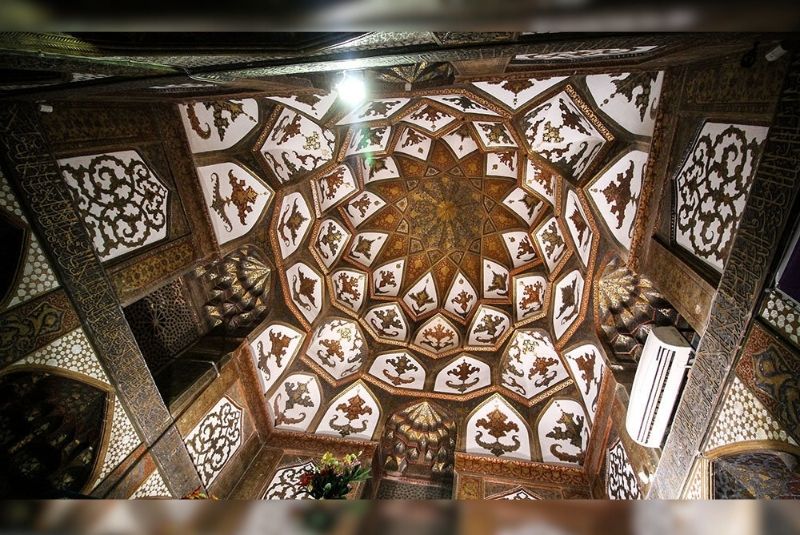
The Shayah Mosque, also known as the Shayah-Nabi Tomb is a historically significant part of the Imamzadeh Ismail religious complex in Isfahan, Iran. The Shayah mosque you see today dates back to the Seljuk period in the 11th century however, the original structure is believed to have been built before Islam, later converted into a mosque during the caliphate of Imam Ali.
It is recognized as the first mosque in Isfahan, originally named "Jameh Khushinan" and later known as Shayah Mosque. The Shayah Mosque is believed to house the tomb of Isaiah, a prophet revered in Islamic tradition and known as the advisor to King Hezekiah.
Architecturally, the mosque showcases the characteristics of Seljuk design, with its most notable feature being the brick minaret, which, although now in a ruined state, once stood 12 meters tall. The presence of the tomb of Isaiah within the mosque adds to its spiritual significance, attracting visitors who come to pay their respects to the prophet.
Who is Prophet Isiah?
Prophet Isaiah, known as "Shayah" in Islamic tradition, is a significant figure in the religious history of the Israelites. Revered as a prophet, Isaiah was an advisor to King Hezekiah, guiding him through times of crisis. Isaiah is most famous for his prophecies that warned of the consequences of the Israelites' disobedience to God, but also for his messages of hope and redemption.
In the Islamic tradition, Isaiah is recognized as a prophet who conveyed God's messages to the people of Israel. His story is closely tied to the history of the Israelites, who are described as descendants of Jacob (also known as Israel). According to Islamic sources, Isaiah, much like other prophets, was sent by God to guide the people back to righteousness and away from idolatry.
Isaiah's tomb is believed to be located within the Shayah Mosque in Isfahan, Iran, making it a site of religious significance. The mosque, built over earlier structures dating back to the Seljuk era, is an important pilgrimage site where visitors come to honor the memory of this revered prophet. Isaiah's legacy continues to be recognized in both Islamic and Judeo-Christian traditions, reflecting his enduring influence as a prophet of God.
Notable Architectural Features of Imamzadeh Ismail
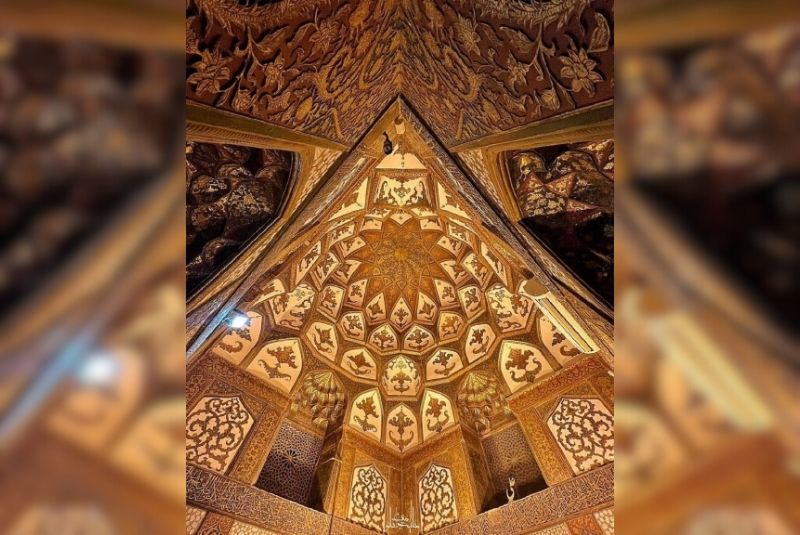
Imamzadeh Ismail in Isfahan, Iran, is not only a place of deep spiritual significance but also a site filled with remarkable artistic and architectural features. Here are some notable architectural features of Imamzadeh Ismail:
Gilded Wooden Doors
The entrance to Imamzadeh Ismail is adorned with two exquisite gilded wooden doors. These doors are decorated with delicate lines of gold on a steel background, showcasing intricate craftsmanship and providing a grand and welcoming entry to the sacred site.
Hallway Paintings
Inside the Imamzadeh, visitors can admire a hallway filled with paintings by Mohammad Saleh Esfahani. These artworks reflect traditional Persian styles and offer a visual journey through the rich artistic heritage of the Safavid period.
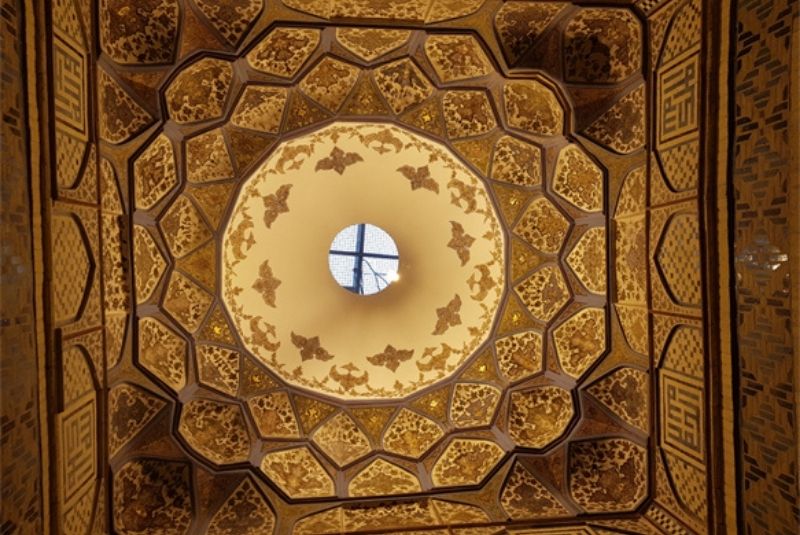
Eastern Stone Basin
In the courtyard of Imamzadeh Ismail, the Eastern Stone Basin stands out with its detailed inscriptions and designs. The basin features a prominent inscription in Thuluth script, offering salutations to the Fourteen Infallibles.
Additionally, the basin is adorned with floral motifs and has a square base. An inscription notes its endowment by Hajiye Shahmar, daughter of Haji Mirza Ali Jazi, in the year 1049 AH (1638 AD), during the reign of Shah Safi.
Western Stone Basin
The Western Stone Basin mirrors the design of the Eastern basin with its square base and decorative elements. Its exterior is embellished with Thuluth script praising the Fourteen Infallibles and intricate decorative patterns in three rows. Notably, the basin features five circular indentations on its edge, which were originally designed to hold water vessels.
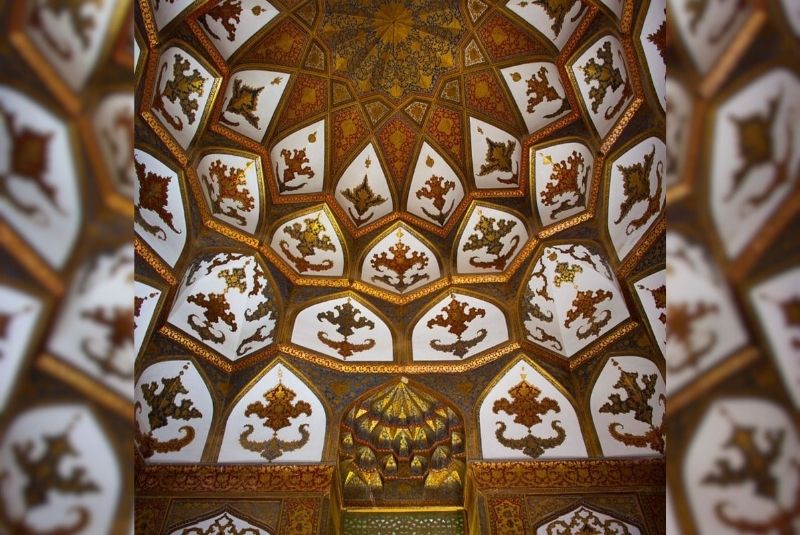
Imamzadeh Ismail Location
Imamzadeh Ismail and Shayah Mosque are located in Isfahan, Iran. They are situated in Imam Ali Square on Hatef Street, making them a prominent part of the city's historical and cultural landscape.
Bottom Line
Imamzadeh Ismail is a revered historical and religious complex in Isfahan, Iran, known for its rich architectural and spiritual heritage. Dating back to the Seljuk and Safavid periods, the site encompasses both the Shayah Mosque and the Imamzadeh Ismail shrine.
Originally a pre-Islamic building, it was transformed into a mosque and later expanded with the addition of the Imamzadeh shrine during the Safavid era. The complex houses the tomb of Imamzadeh Ismail, a descendant of Imam Hasan ibn Ali, and the prophet Isaiah. It is distinguished by its gilded wooden doors, exquisite tile work, and significant inscriptions.
Located in Imam Ali Square on Hatef Street, Imamzadeh Ismail continues to attract visitors and scholars, offering a deep dive into Iran’s Islamic architectural evolution and spiritual traditions.
Share your story!
Comment below and let us know about your Experience.
Your story inspires others!


Comment
Leave a Comment